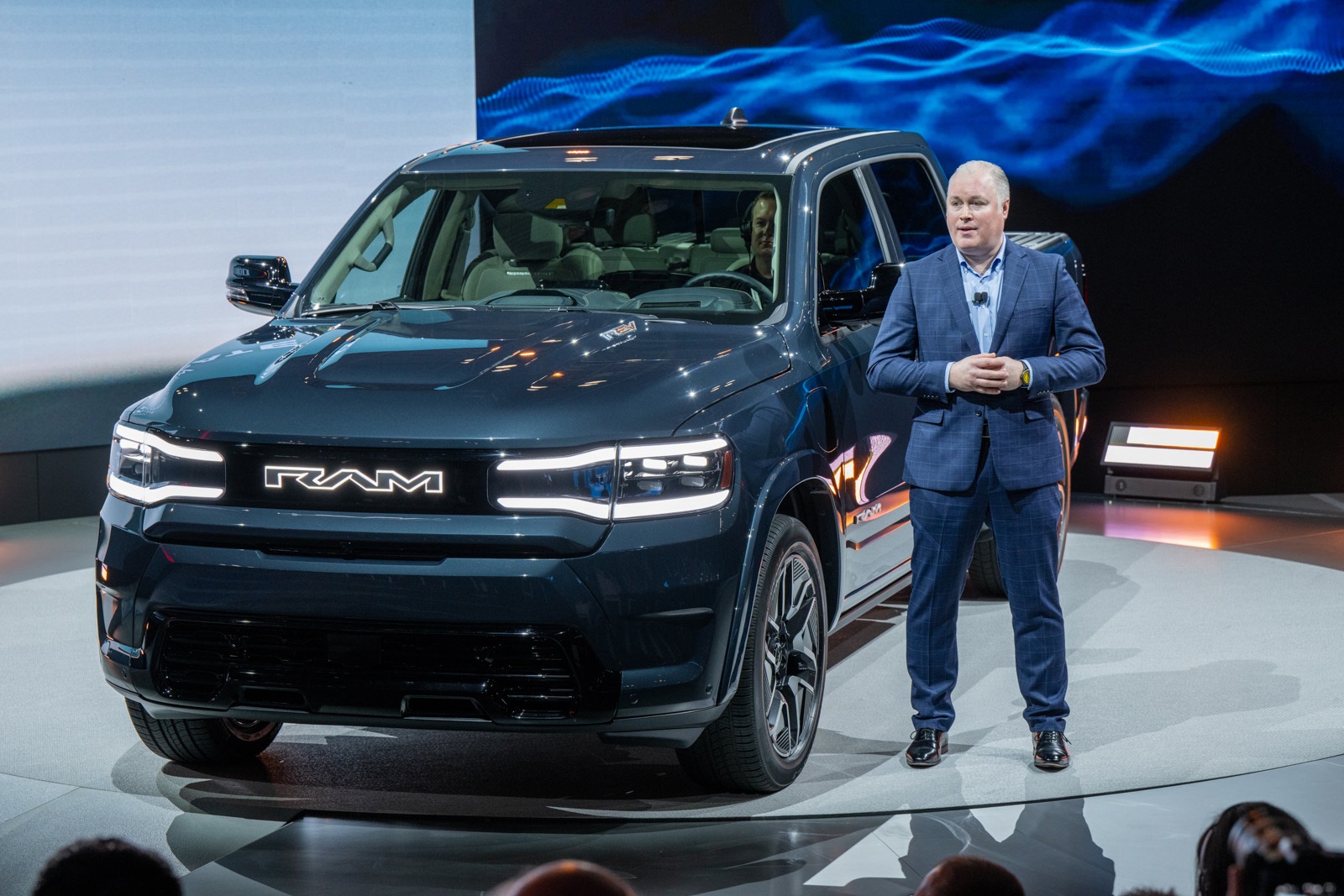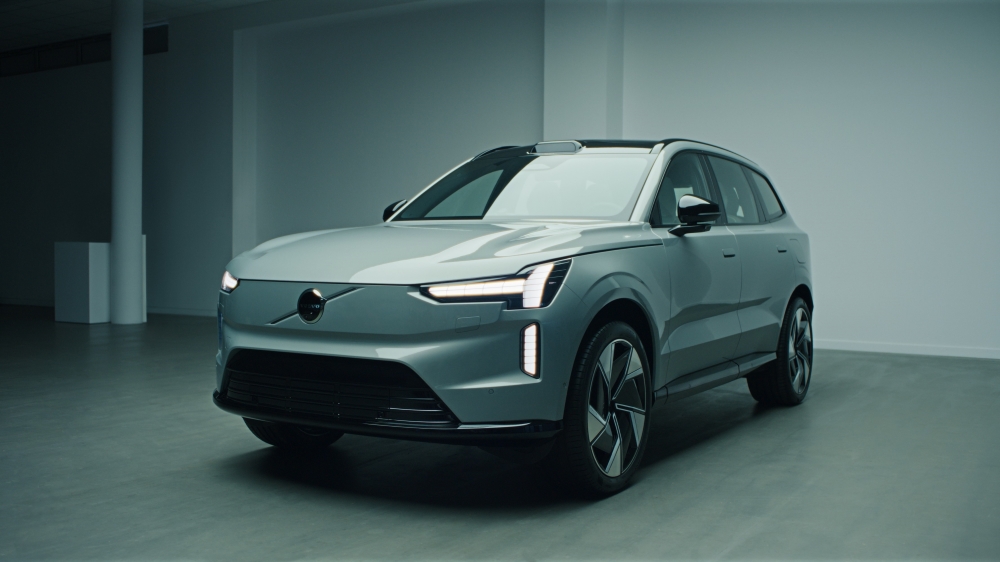2023 was a banner year for EVs in the US as a record number of drivers joined the zero-emissions club. Over 1 million new EV owners were won over by cars that delivered more smiles per mile.
But with the US allocating more land to car storage than to housing, automakers are eager to find new ways to intelligently connect EVs to drivers’ daily lives.
Following a slew of V2X-related announcements, several EV models – and their energy-laden batteries – are now equipped to deliver value even when not being driven thanks to bidirectional charging.
The latest entries in our annual list are highlighted in bold.
| Automaker | Bidirectional vehicles |
| Fisker | Ocean |
| Ford | F-150 Lightning |
| GM | Chevrolet Silverado EV RST |
| GMC Sierra EV Denali Edition 1 | |
| Chevrolet Blazer EV | |
| Chevrolet Equinox EV | |
| Cadillac LYRIQ | |
| Cadillac ESCALADE IQ | |
| Hyundai Motor Group | Hyundai Ioniq 5 |
| Hyundai Ioniq 6 | |
| Hyundai Ioniq 7 | |
| Kia EV6 | |
| Kia EV9 | |
| Kia Soul EV | |
| Genesis GV60 | |
| Lucid | Air |
| Mitsubishi | Outlander PHEV |
| Nissan | Leaf |
| Stellantis | RAM 1500 REV |
| Tesla | Cybertruck |
| Volkswagen | ID.4 |
| Volvo Cars | Volvo EX90 |
| Polestar 3 | |
| Polestar 4 |
Keep reading to take a closer look at the newest bidirectional vehicles going on sale in 2024.
General Motors
The General made the splashiest bidirectional announcement of the year in August when the automaker announced all of its Ultium-based EVs will support V2H by 2026. While the Silverado EV squeaked into our list last year, five other models can now officially be added.
“The technology allows consumers to store and transfer energy to help offset electricity needs during peak demand days and mitigate the impact of power outages, making the transition to an all-electric future even more compelling.” — GM press release
GMC Sierra EV Denali Edition 1

When this full-size pickup is released in the summer, customers will find it has a lot in common with the Silverado (400 miles of range, 10.2kW of V2L power from 10 outlets, 0-60 mph in under 4.5 seconds) along with exclusive luxury accoutrements (CrabWalk diagonal drive, quilted high-performance seating material and other interior flourishes like engineered bass wood).
Chevrolet Blazer EV and Equinox EV

These SUVs with familiar nameplates are actually newly designed Ultium platform vehicles. The Blazer offers a bit more cargo space and, incredibly, three drivetrain configurations, allowing customers to select front-, rear-, or all-wheel drive. The top-of-the-line SS treatment provides 557 hp, launching it to 60 mph in under 4.0 seconds.
The Equinox is a more affordable urban crossover that promises great value thanks to its comparable driving range.
Cadillac Lyriq and Escalade IQ

Sit back and relax – the upscale Lyriq achieves a level of comfort and style befitting of the brand’s heritage. Priced a shade above the new Blazer, shoppers will be pleased to know that Cadillac’s SUV contains several bespoke interior pieces – in fact, designers never reached for the GM parts bin. Drivers are treated to a 33-inch screen (the dashboard and infotainment screens are mated), a 19-speaker audio system, customizable ambient lighting, and glittery embellishments throughout. Active noise cancellation and a 5-link suspension system ensure a serene drive.
The 2025 Escalade IQ, available late 2024, is more bombastic. It boasts 750 horses, 450 miles of range, 24” wheels, and an LED display that one-ups the Lyriq’s by stretching 55 inches, pillar to pillar.
Hyundai Motor Group
Hyundai Ioniq 7

A three-row SUV joins the Ioniq family. Still in concept mode, the 7 strives to create a lounge setting for passengers through its long wheelbase and reconfigurable seating. Outside, a steeply raked windshield morphs into the roofline. Will this large EV hit showrooms in 2024?
Stellantis
“Lives will be made easier courtesy of vehicle-to-vehicle, vehicle-to-home and vehicle-grid bi-directional charging that can send power to a home during a storm, run the tailgate party or provide power at the camp or jobsite.” — Stellantis press release
Ram 1500 REV

After several years of development, a prototype of Ram’s Revolution Electric Vehicle (REV) 4-door crew cab was shown in the real world for the first time at CES 2023. The pickup promises 350 miles of range from a 168-kWh battery pack – drivers looking for more can choose a 229-kWh battery that delivers an impressive 500 miles. Also impressive: max trailering capacity of 14,000 lbs, up to 24 inches of water fording depth, vehicle-to-vehicle charging, and onboard V2L comprising a 7.2 kW power panel in the bed and 3.6 kW from the frunk. Stellantis estimates the truck will arrive in Q4.
Tesla
“As we continue to improve the power electronics in our vehicles we’ve found ways to bring broader actionality while actually reducing cost … and as at all things Tesla the goal is usually to get more for less. We are in the middle of a power electronics retool. I would say that will bring [bidirectional charging] to all of our vehicles over the next two years.” — Drew Baglino, Tesla’s 2023 Investor Day
Cybertruck

Tesla EVs excel in numerous ways, but the company has always been outdone on the bidirectional charging front – until now. The polarizing Cybertruck will be the company’s first vehicle equipped with “Powershare”, unlocking over three days’ worth of home backup power, vehicle-to-vehicle charging, and onboard power from four standard outlets and one 240V outlet in the cargo bed – putting out a total of 11.5 kW. What’s more, all Tesla vehicles will be capable of bidirectional charging sometime in 2025.
Volkswagen
“Bidirectional charging – a ground-breaking technology about to be launched at Volkswagen: the electric cars can feed electricity they don’t need into the customer’s home network (vehicle-to-home) and in the future they will also provide electricity to stabilise the electricity grid.” — VW press release
ID.4

All ID. models with a 77-kWh battery will have bidirectional charging capabilities in future. An over-the-air update rolled out gradually will be used to make this available for vehicles already delivered as well. Let’s focus today on the company’s compact crossover for the masses. The ID.4 offers smooth handling, plenty of space and an approachable price tag. The vehicle can provide two days of backup power at a discharge rate of 10 kW.
Volvo Cars
“We envision a future where our cars can also provide our customers with new sources of revenue as well as value.” — Emanuella Wallin, Polestar Product owner charging and energy
Polestar 4

Towards the end of 2023, Polestar posed a question: What if your electric car could do more than just take you places (like, pay your electricity bills)? To obtain a real-world answer, Polestar launched a V2G pilot project in Sweden wherein a group of Polestar 3 owners will be able to sell their energy based on past data to match energy demand, allowing them to make money from their cars.
It’s only fitting that the forward-looking automaker eliminated the rear window when it designed the Polestar 4, a sleek bidirectional crossover arriving later this year. The carmaker prioritizes the use of sustainable materials and strives to create a minimalist, modern environment. Automated emergency braking with pedestrian detection and lane-departure warning with lane-keeping assist all come standard.
Joining the Polestar 4 is the 2025 Volvo EX90, a bidirectional mid-size electric luxury crossover with 300 miles of range and a suite of next-generation driver-assistance technology.
Growing by leaps and bounds
Our list of bidirectional vehicles keeps getting longer – we added ten new EV models to the list compared with four last year as more companies expressed interest in developing cars that support V2H and V2G. Follow us on social media to keep track of all the bidirectional charging announcements that are sure to follow this year.


